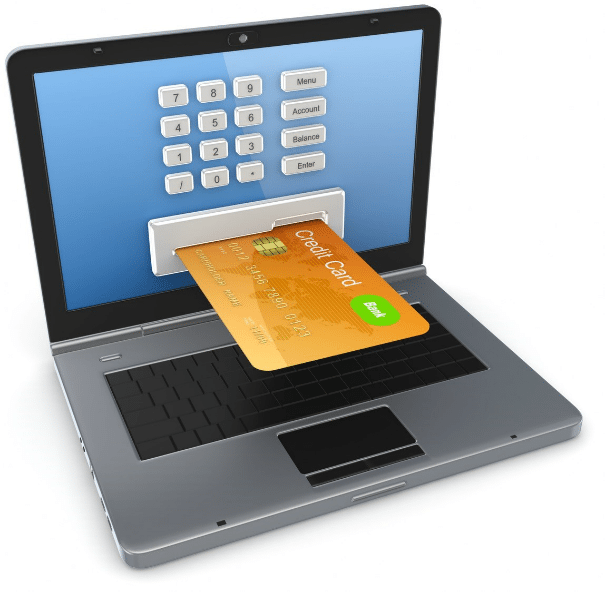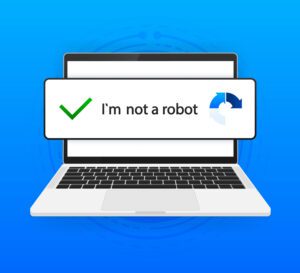With online shopping becoming more popular by the day, there are several things you should be watching out for to ensure you’re safe online when making payments.
In early August, The Australian released an article which stated that a fraud report by the released Australian Payments Network confirmed an increase in card-not-present (CNP) fraud.
CNP fraud refers to the process in which credit card details are stolen and used to make purchases without the actual card being present. The article stated that findings for 2016 revealed that 78% of credit card fraud was in relation to CNP scams.
Given these recent findings identified by the Australian Payments Network, we thought we would give you a few tips and pointers to keep you safe from CNP fraud and all other types of card scams.
So , what can you do to prevent Card Not Present fraud?
#1 – Keep your computer free of viruses and malware.
This first step might be obvious to many, however, since it’s quite easy for computers to acquire viruses nowadays, with all types of emails being sent and suspicious websites being visited, we thought we would touch base on this step.
If you do most of your banking on your computer and regularly download a variety of file types, programs and software, be sure to run virus and malware scans regularly, as malware which is known to spy on keystrokes could be secretly capturing your credit card information. It’s recommended to do a regular scan at least once a week, if you’re frequently using your computer.
#2 – Look out for SSL certificates.
If you are required to fill out any personal information at all on a particular website, the site you are giving information to should have an SSL certificate. The easiest way to see this is in the address bar up the top, next to the “www.”. It should feature “https” before the URL. If it just features “http”, then it is not secure.
If you are using browsers like Mozilla Firefox and Google Chrome, you will see warning signs in your browser. Firefox will display a padlock next to the URL bar with a red slash through it, while Chrome will display a message staying “Not Secure”.
It’s not recommended to purchase at all from websites that don’t feature SSL.
#3 – Use fingerprint sign-in where you can.
If you have a fingerprint scanner on your phone, a lot of apps will allow you to setup fingerprint sign-in, like PayPal. Since a lot of websites are now integrated with PayPal, if you have this setup, it will give you a bit more security, as no one has the same fingerprint as you.
#4 – Use secure payment gateways like PayPal online where you can.
Using a secure payment gateway like PayPal will keep your credit card details stored safely during transactions online, rather than not.
#5 – Never check finances or transfer money online using public WiFi or in a busy public place.
Using public WiFi exposes you to all sorts of security threats in general. You should never use public WiFi to check any sorts of online accounts and should do this at home on your own network that you know is secured.
If you’re in a busy environment, standing in a line waiting to be served or in a busy location where a lot of people are around you, you should refrain from checking your accounts. If you need to transfer money or check your account, find somewhere a little more enclosed and use your 3G/4G connection.
#6 – Don’t write down your card information on paper.
Years ago, a lot of companies sent out forms which required credit card details to be written down and posted back or sent back by fax. Given the day and age we live in today, it’s not a recommended practice to do this anymore.
Be aware of companies that request your card information to be written down and sent back. Businesses that request credit card details to be written down should have other methods of payments such as direct deposit.
#7 – Watch out for ATM skimming devices and cover your pin.
Although you probably don’t place your credit card into an ATM all too often, if you use an ATM, cover your pin and look out for anything unusual on/around the ATM that shouldn’t be there. This is how a lot of CNP fraud still occurs.
Putting aside CNP fraud, the following will keep you protected from day-day card use as well:
#8 – If you can’t locate your card, ring your bank straight away.
Some banks will allow you to temporarily lock your card so it can’t be used until it is unlocked. This will give you time to look for your card that you may have just dropped under your kitchen table at home. If it has been three days or longer and you still can’t find your card, ring your bank and report it lost/stolen, before waiting any longer.
#9 – Shred or destroy any printed mail that contains your information.
A lot of people do often forget to do this. Criminals looking to commit identity theft will take you for a ride and destroy your credit rating if they get their hands on your mail containing all your personal information. To stop identity theft, it’s also a good idea to lock your mailbox with a rust-proof padlock / key if you can to prevent any mail being stolen for identity theft.
#10 – Shred or cut up your old credit cards, even when they have expired.
Never throw your cards in the bin without cutting or shredding them, as this exposes you to all sorts of nasty fraud. Even if you have closed an account or card, making the card no long valid, be sure to shred it or cut it up.
Lastly:
#11 – Read through your statements or check your bank account for any suspicious activity.
It’s a good idea to get into the habit of checking your statements or accounts for anything that looks unusually suspicious. If you never check your account or look at your statements, you may not notice suspicious payments, particularly if they become regular payments.
#12 – Report any unauthorised or unusual transactions straight away to your bank.
If you see any transactions in your account for amounts as little as $0.01c or $1.00, which you may not be concerned about since they are quite minimal, report them to your bank straight away. If someone has obtained your credit card information, they may process amounts as little as this to be sure the card is still active and details work, before processing a larger amount at a later date.







